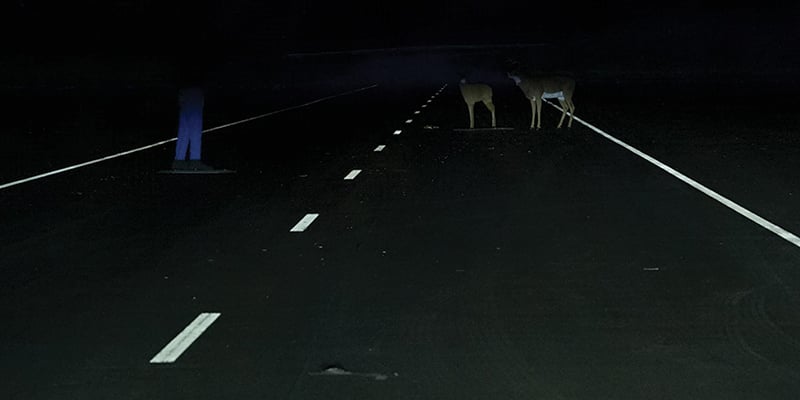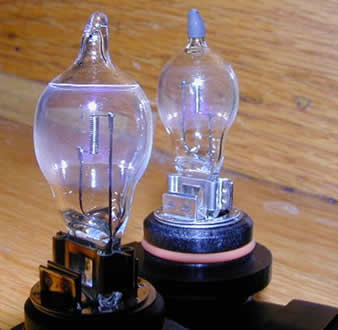Have you ever faced the dilemma of whether to replace both headlights when only one burns out? This common question has left many drivers pondering the best course of action. This blog post will discuss the pros and cons of replacing both headlights simultaneously. You can decide what's right for your vehicle and driving experience with our help.
Why Replacing Both Headlights Makes Sense
There are several reasons to consider replacing both headlights even if only one has burned out:
Even Illumination
As headlights age, their brightness gradually decreases. Replacing both headlights at once ensures equal illumination on both sides of the road, improving visibility and reducing the strain on your eyes during nighttime driving.
Convenience
Replacing both headlights together can save you time and effort in the long run, as you won't need to perform the replacement process twice within a short period. In many cases, the second headlight may burn out not long after the first, necessitating another replacement.
Safety
Uneven illumination can be hazardous, as it may impact your ability to see road signs, pedestrians, or obstacles clearly. Replacing both headlights can minimize this risk and help keep you and other road users safe.
Reasons to Replace Only the Burned-Out Headlight
Despite the benefits of replacing both headlights, there may be instances where replacing only the burned-out headlight makes more sense:
Cost Savings
You can save money in the short term by replacing just the burned-out headlight if you’re on a tight budget.
Different Bulb Types
If your low and high beam bulbs are different types, you may not need to replace both headlights.
Recent Replacement
If you've recently replaced one of your headlights, it may not be necessary to replace both when the other burns out.

7 Tips for Replacing Headlights
Whether you decide to replace one or both headlights, keep these tips in mind for a smooth replacement process:
- Consult Your Owner's Manual: Your vehicle's owner's manual will provide specific instructions on replacing your headlights, including any necessary precautions or tools required.
- Choose the Right Bulbs: Ensure you select the correct bulbs for your vehicle, considering compatibility, brightness, and color temperature.
- Proper Alignment: After replacing your headlights, ensure they're properly aligned to provide optimal illumination without causing glare for other drivers.
- Consider Upgrading: If you're replacing your headlights, it might be the right time to upgrade to a higher-quality bulb. LEDs and HIDs offer improved visibility, energy efficiency, and longevity.
- Replace in Pairs: If only one headlight has burnt out, replacing both is usually recommended to ensure consistent brightness and color temperature. Taking this step can also prevent the need for a replacement in the near future.
- Clean the Lens: Make sure your headlights' lenses are clean before installing the new bulbs. Getting rid of grime, dirt, or debris will help keep the light clear. This will also maximize clarity and brightness.
- Test the Lights: Check your headlights after replacing them to ensure they're working properly, both in terms of illumination and any automatic functions.
Takeaway
Deciding whether to replace both headlights when one burns out ultimately depends on your circumstances, budget, and preferences. Replacing both headlights can provide even illumination, increased safety, and convenience. You can save money in the short-term by replacing only the burned-out headlight. Whichever option you choose, always ensure proper alignment and consider upgrading to higher-quality bulbs for the best possible driving experience.
Learn more about automotive lighting by visiting our YouTube channel and liking and subscribing to our channel. You can reach our customer service team by calling us today.
Note: This article is for educational purposes only and may show street-use examples with products that may not be DOT-compliant for use on public roads. This article is not intended to imply vehicle-specific street legality. LED and HID bulbs are street legal in the USA for fog light use only and not in low beam or high beam headlights because they are not compliant with DOT / FMVSS108. When looking for on-road-use headlight upgrades we recommend DOT-compliant headlight housings, not bulb replacements. Certain specialty vehicles strictly limited to off-street use and not having DOT registration or license plates may use these products exclusively off-streets. International street legality varies by country. For detailed clarification on-street use, click here.







.png?width=300&height=87&name=logo%20(1).png)